
The new Panasonic GH5s takes on the Sony A7SII with its new Sensor! Wowzers!
Pre Order this new GH5s at B&H Photo HERE
So Panasonic has announced the new $2500 GH5s and it is aimed at the filmmaking crowd from what I can tell, but also to those who want better low light performance with Micro 4/3 in general. Panasonic has just done something that made me smile, made me very happy and made me go over to B&H Photo and click on the “PRE ORDER” button. I admit, I have not went all the way and checked out yet but being on the search for a serious camera that can shoot GREAT video and leave options open for the future when I move into 4K (which I have not yet but will be this year), the GH5s has my full attention due to the size and smaller lenses available for this system. The GH5 had rave after rave from those who used it solely for video, and I almost caved on that model just 2 months ago but when I saw the slow AF speed with video (which I use) it was a dealbreaker for me as the Sony A9 was delivering for me in that area. But this camera is $2500, not $4500 that the A9 will set someone back.
If With the new 10MP sensor that promises enhanced low light ability, new faster AF, and in fact, the best low light performance for any Micro 4/3 camera ever, this makes so much sense!! 10 MP is it for this kind of camera. The main reason I loved the Sony A7SII so much is because of the 10 MP sensor, and I used that mainly for photos in the lowest of light. Today, most new Sony models offer fantastic low light and high ISO performance but Micro 4/3, well, they have always lagged behind in that area.
UNTIL NOW.
This is the first Panasonic in a while that has me excited as I sit here and dream of the possibilities of an all out video rig with this camera (for my other projects). For those who have the GH5 I imagine this will be a great update for you, and for those looking to get a nice camera for video and photo work, this one may be “the one”. See the specs below, they are pretty impressive on the video side, as they should be ; )
THESE DETAILS BELOW ARE FROM B&H PHOTO, SEE THEIR GH5S PAGE HERE!
I PUT IN BOLD THE NEW FEATURES THAT HAVE ME EXCITED ABOUT THIS CAMERA!
The Panasonic Lumix DC-GH5S is a mirrorless Micro Four Thirds camera optimized for movie recording and low-light performance. Revolving around a 10.28MP Digital Live MOS sensor, DCI and UHD 4K video recording is possible at up to 60p and the large individual pixel size also affords impressive low-light performance to an extended ISO 204800, along with Dual Native ISO technology at ISO 400 and ISO 2500. Coupled with an updated Venus Engine, the sensor and processor combination also enables faster readout speeds along with 1.3x less rolling shutter distortion compared to previous GH-series cameras. Internal DCI 4K30p recording is available with 4:2:2 10-bit sampling and a full-size HDMI A connector can be used to simultaneously output to an optional external monitor or recorder. The sensor’s extended sensitivity range has also been used to promote working with V-Log L and Hybrid Log Gamma HDR modes for effectively increasing your dynamic range and affording more flexibility when color grading during post-production.
Beyond its video prowess, the GH5S is no slouch when it comes to stills shooting, either. The sensor and Venus Engine combination enable recording 14-bit raw files with a top continuous shooting rate of 12 fps with single-shot AF, or up to 8 fps with continuous autofocus. Borrowing from the video side, 4K PHOTO modes are also available for shooting 8MP stills at up to 60 fps. Benefitting stills, the Depth-From-Defocus AF system works quickly and accurately using 225 dedicated AF areas, and is sensitive to -5 EV luminance for working in extreme low-light conditions.
Beyond imaging specs, the GH5S retains its professional build quality the GH-series is known for. The magnesium alloy body is fully weather-sealed for working in inclement conditions, and physical controls have been enhanced for easier tactile control. A large 3.68m-dot OLED electronic viewfinder is featured, for high-resolution eye-level monitoring, as well as a rear 3.2″ 1.62m-dot LCD touchscreen with free-angle movement to suit working from high and low angles. Dual UHS-II SD memory card slots are available for flexible file recording and built-in Wi-Fi with NFC and Bluetooth wireless connectivity enable seamless image sharing and remote camera control from a mobile device.
- 10.28MP Digital Live MOS Sensor and Venus Engine
- Engineered specifically for low-light shooting and high-resolution video recording, a 10.28MP Digital Live MOS sensor is featured, along with an optimized Venus Engine for clean color detail and texture along with fast readout speeds. Using Multipixel Luminance Generation and Intelligent Detail Processing, it will maximize sharpness and detail as well as accuracy in a variety of lighting conditions.
The sensor features a multi aspect ratio design, which enables the use of 4:3, 17:9, 16:9, and 3:2 ratios for shooting stills, recording DCI and UHD 4K, and for working in Anamorphic mode. This unique design allows you to maintain a lens’s native angle of view despite changing the image format. Additionally, the sensor and processor combination avails high readout speeds and suppresses rolling shutter distortion by approximately 1.3x compared to the GH5 when recording video or working with the electronic shutter.
The sensor’s deliberately low resolution design, and subsequently larger pixel size, also optimizes it for low-light performance and enables recording a greater dynamic range. Borrowing from Panasonic’s broadcast line of video cameras, Dual Native ISO technology is used that sets ISO 400 and ISO 2500 as base sensitivities for low noise levels. The overall native sensitivity range runs from ISO 160-51200, and can be extended to ISO 80-204800.
- DCI and UHD 4K Video Recording
- Specifically geared for video shooting, the GH5S features a versatile and capable range of video specs, including the ability to internally record DCI 4K at up to 60 fps and 150 Mbps with 4:2:0 8-bit Long GOP; 30 fps and 150 Mbps with 4:2:2 10-bit Long GOP; and 24 fps and 400 Mbps with 4:2:2 10-bit ALL-I. UHD 4K recording is also supported along with Full HD at up to 240 fps for slow-motion playback. A full-size HDMI port is present on the camera for high-quality output at 4:2:2 10-bit in all settings for use with external monitors and recorders.
- Optimizing your recording for post-production color adjustment, the GH5S features a pair of gamma settings suited to capturing a wide dynamic range. V-Log L has been pre-installed on this camera and is used to capture a flat, neutral gamma curve well-suited for grading. Additionally, a High Dynamic Range mode, and Hybrid Log Gamma, can be used to record greater detail in both the shadow and highlight regions of a scene. Additional picture styles are available to provide a more gradable image, such as CINELIKE V and CINELIKE D, as well as an in-camera LUT to make monitoring easier. Also, users will have access to overcranking and undercranking Variable Frame Rate settings which provide speeds up to 2.5x slower in 4K (60 fps) and 7.5x slower in Full HD (240 fps). Also, a 4K Anamorphic mode is available, which will let you record in a proper 4:3 ratio for adjustment in post-production.
For greater recording versatility, the recording system frequency can be changed between 59.94 Hz (NTSC), 50.00 Hz (PAL), or 24.00 Hz (Cine) for worldwide use, and there is no recording duration limit for all settings. Three separate video control panels can also be used—shutter duration/ISO, shutter angle/ISO, or shutter duration/dB—to match various worldwide production needs.
The GH5S is designed to be an expandable system, with multiple options available to help improve video recording capabilities. Examples of this are the included BNC conversion cable for syncing time code settings with an external device for multi-camera setups; LINE input support via the 3.5mm mic input for using an external audio device; and the optional XLR Microphone Adapter that provides XLR inputs and physical controls through a hot shoe connection. Users can also use standard microphones and headphones via the 3.5mm input and output jacks.
- Stills Recording and Depth-From-Defocus AF System
- Beyond just a video camera, the GH5S is also adept at recording stills. Using the unique sensor architecture, the low-light capabilities and fast readout speeds make it ideal for working in difficult lighting conditions and for photographing fast-moving subjects. For 12-bit raw shooting, and when working with AF-S, continuous shooting up to 12 fps is possible, along with a top 8 fps shooting rate with AF-C. For greater color information, a 14-bit raw recording setting can also be used, and 11 fps and 7 fps continuous shooting rates are available.
For accelerated autofocus performance, and Advanced DFD (Depth-From-Defocus) technology is employed to quickly calculate the distance to subjects and adjust the focusing position in as little as 0.05 seconds. This contrast-detection type focus method benefits both still and video recording modes, as well as subject tracking applications where subject color, size, and motion vectors are used to intelligently lock-onto the moving subjects and ensure precise focus. The sensitivity and speed can be adjusted to further improve performance with certain subjects. It also features 225 AF areas which provide excellent control over where the camera will focus. Additionally, supporting working in low-light conditions, a Starlight AF feature enables accurate AF performance down to -5 EV.
Benefitting manual focus operation, focus peaking is available that highlights bright edges of contrast with a colored outline for quickly recognizing your focus point, as well as Touch MF Assist for touch-to-focus operation.
- 4K PHOTO Modes
- Utilizing the GH5S’s video recording capabilities, a trio of still shooting modes are available for recording continuous 8MP stills at a 60 or 30 fps shooting rate:
- Burst: This mode will allow you to continuously record, making it ideal for instances where you need a fast frame rate in order to capture the best moment.
- Pre-Burst: This mode is ideal for times when you’re unsure of the critical moment to press the shutter button and will record images one second prior to and one second after pressing the shutter button in order to give you 60 frames to choose from.
- Burst (S/S): This mode most closely follows the video recording process, and allows you to playback your video, pause at the chosen moment, and use the shutter button to mark a chosen frame from the video and save it as a single 8MP frame.
- Body Design and Built-In Wi-Fi
-
- A large OLED Live View Finder has an impressive 3.68m-dot resolution and 0.76x magnification for eye-level composition.
- A larger means for image composition and playback, the 3.2″ 1.62m-dot rear RGBW LCD monitor has a free angle, tilt and swivel design to support viewing from a variety of angles. It is also a touchscreen, which permits intuitive menu navigation and settings control.
- Optimized for nighttime shooting, the viewfinder and rear screen can be tuned to benefit working in low-light conditions. A Night Mode allows you to separately reduce the brightness of the screen and finder in order to maintain your night-adjusted vision. Alternatively, brightness can be boosted by lowering the frame rate and increasing the gain in live view for working in extremely dark situation. And, for manual focusing, an MF Assist feature lets you zoom into the scene by 20x for focusing on small subjects.
- Dual UHS-II SD card slots are present which provides settings such as Relay Recording to automatically switch cards when one is full; Backup Recording, which recording the same data to both cards simultaneously; and Allocation Recording, which lets you save certain files to each card for easier organization.
- Constructed from magnesium alloy with die-cast front and rear frames, the GH5S features a durable design that also incorporates extensive sealing at each joint, dial, and button to render it both splash- and dust-proof as well as freezeproof to 14°F.
- A joystick is available on the rear of the camera to make changing many settings easier and more intuitive, such as changing a focus point.
- The sleek flat-body profile incorporates both front and rear dials for intuitive control over aperture and shutter speed settings. Multiple assignable function buttons are also available, as well as a dedicated exposure compensation dial.
- Built-in 5 GHz Wi-Fi connectivity with NFC and Bluetooth 4.2 Low Energy allows for wireless image sharing and remote camera control from linked smartphones and tablets. Bluetooth LE also enables a constant connection to your mobile device, allowing for functions such as geolocation and automatic image transfer.
- Other Camera Features
-
- Lumix Tether software allows you to shoot tethered to a computer via USB connection. This software enables full camera control and shooting from the computer, along with video and 4K PHOTO modes support, with the added benefit of previewing and reviewing your imagery from a larger computer monitor.
- A mechanical focal plane shutter enables a fast maximum shutter speed of 1/8000 sec., as well as a top flash sync speed of 1/250 sec. An electronic shutter function also avails a top shutter speed of 1/16,000 sec. to better enable working in bright conditions and with wider aperture settings.
- Raw image files can be processed in-camera for a more streamlined post-production workflow.
- Depending on the lens in use, the included DMW-BLF19 battery provides approximately 440 shots per charge when using the rear monitor, or 410 with the electronic viewfinder.
- Photo Style modes: Standard, Vivid, Natural, Monochrome, Scenery, Portrait, Custom, Cinelike D, and Cinelike V.
- Creative Control modes: Expressive, Retro, Old Days, High Key, Low Key, Sepia, Monochrome, Dynamic Monochrome, Rough Monochrome, Silky Monochrome, Impressive Art, High Dynamic, Cross Process, Toy Effect, Toy Pop, Bleach Bypass, Miniature Effect, Soft Focus, Fantasy, Star Filter, One Point Color, and Sunshine.

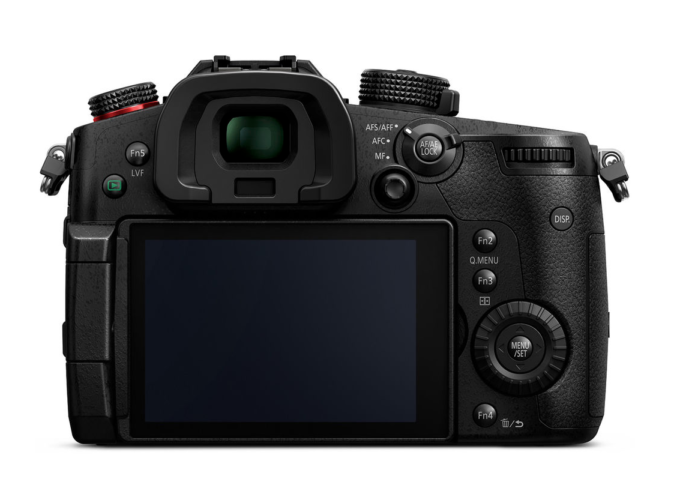
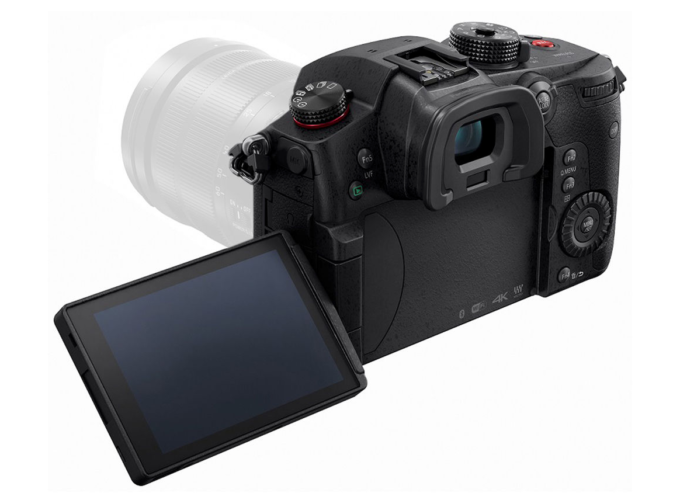
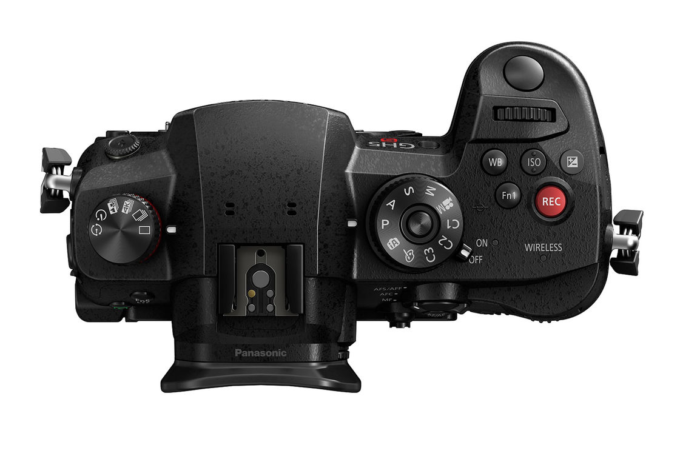


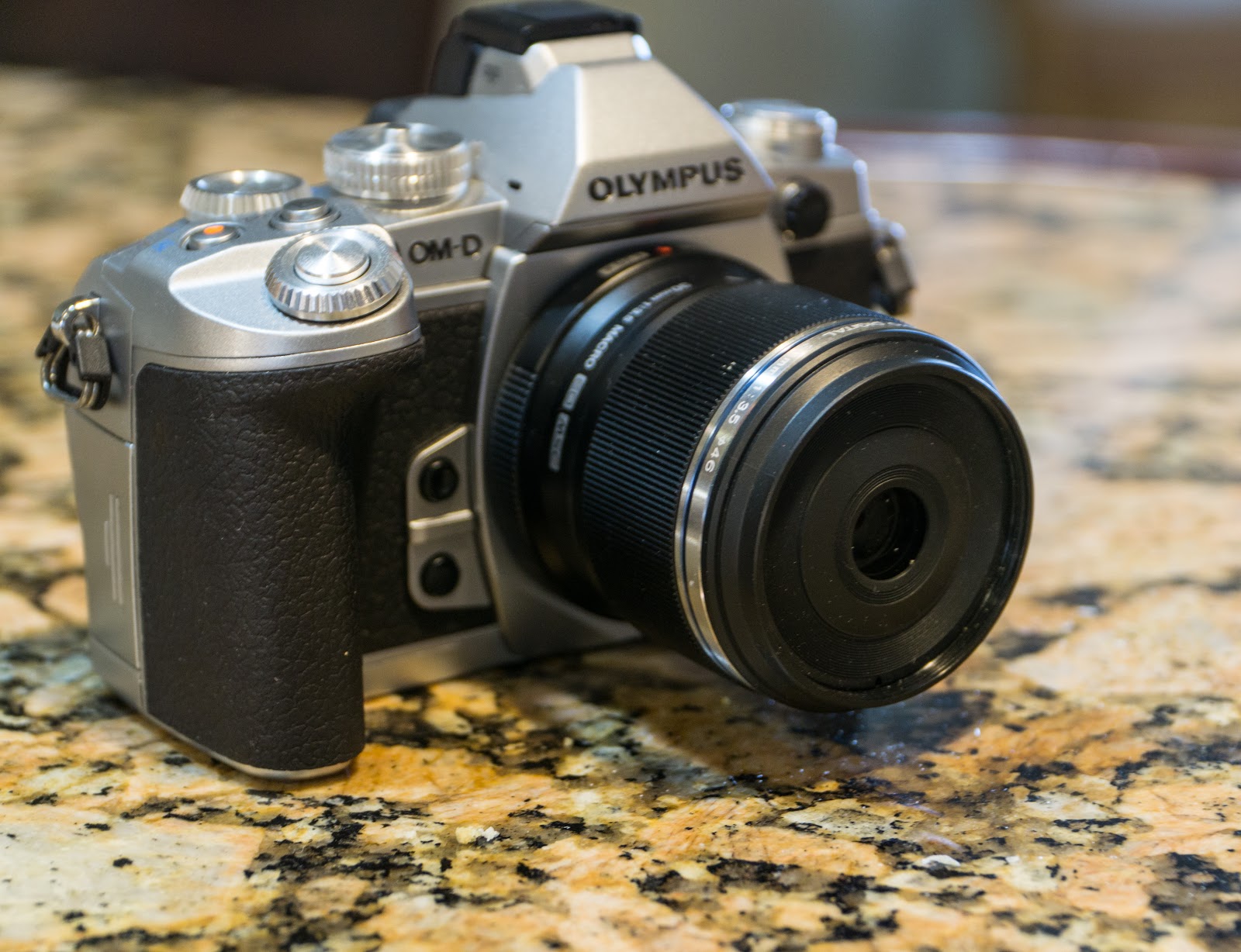
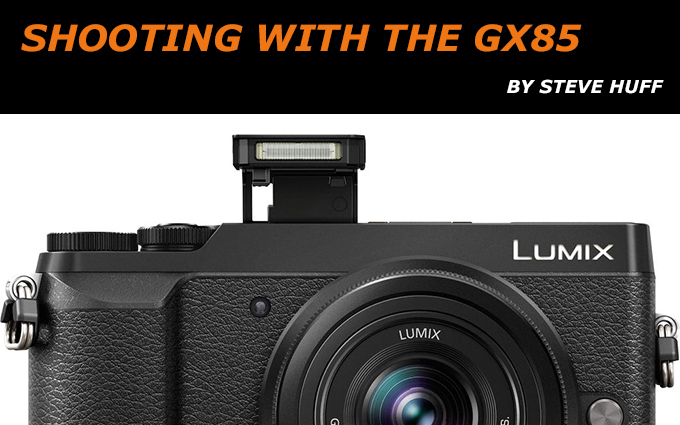
FYI I seem to Remember RD Beta version of this UK. Steve One Question
Pro-sumer version of Leica M Digital.
Will Consider this model Later when GH6 model arrives.
Pana sure would look Great inside Glove box of my Dream Car!
Thanks for this Steve. I think Leica Has finally realised there is a market for Improved m 4/3 Sensor. Curious to see the 4K Stills. Be sure to keep us in the Know.
Click Advance.
Wow!!!
Steve changes to the dark side!!!!
Welcome 🙂
Maybe you will ditch Olympus afterwards as I have, while I was little my time oly Pro User since the E1.
As for the IBIS moaning : the camera isn’t made for the YouTube crowd. It’s made for pros and big productions…. and they don’t want but IBIS as you never can turn IBIS of, only looking the floating sensor in place by software… just look at the detail design and you will understand…
B
O.I.S. w Oly Pro lenses?
On second look, DP Review does report that the camera has an “oversized” sensor, so it does seem to do what Panasonic does in some more compact “multiaspect” cameras, cropping the sides for stills and cropping the top and bottom for video. Strange that B&H’s specs page reports the same measurements as a standard 4/3 sensor. I’m curious to know if you can get a (slightly vignetted) raw of the whole, uncropped sensor as I used to do with earlier Lumix compacts.
I’m trying to figure out how the resolution works here. The maximum stills resolution is 3680×2760, but 4k is 3840×2160. The specs from B&H say the sensor’s “actual” resolution is 11.93 but its effective is 10.28. A m43 sensor with the same horizontal resolution as 4k would have a total resolution of 3840×2880 = 11.0592 mp. At first I suspected maybe it used a sensor slightly wider than 4/3 and cropped wider for video and taller for stills (sort of like the lx100), but apparently it is a 4/3 sensor. Any idea how this math works? Is this a case of clever interpolating and/or demosaicing to output a different pixel count for video than stills?
Looks like a amazing piece of kit. What I can’t wrap my head around is the removal of IBIS. I think this camera would be a game-changer if it had IBIS but I fear that dropping this essential feature will be the difference between this cam being a smash hit and it failing miserably. They could have easily included it, increased the price by a few hundred and they sell like hotcakes but I think Panasonic just shot themselves in the foot big time. Personally, I think I’ll wait until they come out with the GH6s, or whatever the next one is called that is truly full-featured and not handicapped like this one. I’d gladly pay and extra 500 bucks to have IBIS!
Yes, this definitely makes it a no-go for me. That’s quite an unbelievable omission. It could have to do with what looks like a new sensor format, but I can’t imagine why it would have been so hard to scale up the IBIS of the GH5 a tiny bit.
Panasonic removed because most of pro users use external stabilizer rigs, and IBIS is not compatible with them (causes weird effects). GH5 is cattered to pro users mainly. However, many Panasonic lenses are stabilized, so camera IBIS lack is not be a big deal.
It is quite simple to turn the IBIS off (This is in the menu in the Olympus Cameras) Many Panasonic lenses might be stabilised but they are slow lenses. Really odd omission IMO.
I think it was DPreview that mentioned about the first generation of the Sony A7 series and how they didn’t have IBIS either and that it’s likely that the GHs could perhaps follow in the same footsteps and include it in their next iteration. I’ve read a few things regarding this, that stabilizing the larger sensor requires a more advanced IBIS and that they didn’t include it because it’s geared towards professionals who would be using a stabilizing rig but I have a problem with these reasons (excuses). For the former, why would they rush it to market? Like you, I don’t believe it would be that hard to slightly scale up their IBIS system. For the latter, how many using this cam are honestly going to bring a stabilizing rig with them wherever they go? Professionals still usually don’t go for the DSLR form factor when it comes to their video gear and going by the fact that a lot of Panny or Olympus prime lenses (plus any that are adapted from other formats) don’t have OIS, this will hurt their sales. Panasonic’s dual IS is a brilliant innovation and I strongly believe their flagship should have it. Regarding Sony, they seem to always be a step ahead of everyone else in one way or another so I imagine the A7sIII is going to be amazing and I believe many will wait for its arrival rather than going for this Panny.
I wouldn’t be suspicious. Many cameras with in-camera stabilization, like Pentax, do video much better with the IBIS off. Many testers don’t know that and when they test them keep the IBIS on, with bad results. A good video camera does much better without IBIS and external stabilization rigs. There are many options nowadays. And, as I said before, for the enthouiast, many Panasonic lenses are stabilizied.
Can’t wait to hear more about it!
Just so you know: in Australia, a “wowser” is a killjoy and a prude. The term “wowzers” in the context you used it is completely foreign to me.
Even though we are separated by language, I enjoy your work.
Just means “WOW”! As in, showing excitement. Thank you.
I’m Australian and I totally got Steve’s exclamatorial headline…
You obviously never watched much Inspector Gadget …WOWZERS!! 😉
With the A9 in hand and doing a good job for you, you may want to hold out and see what the A7S III is all about. The new Panny doesn’t have IBIS … No IBIS No Sale for me. For 25 hundo they should added Sync IS with an off switch for the gimbal minded 😉